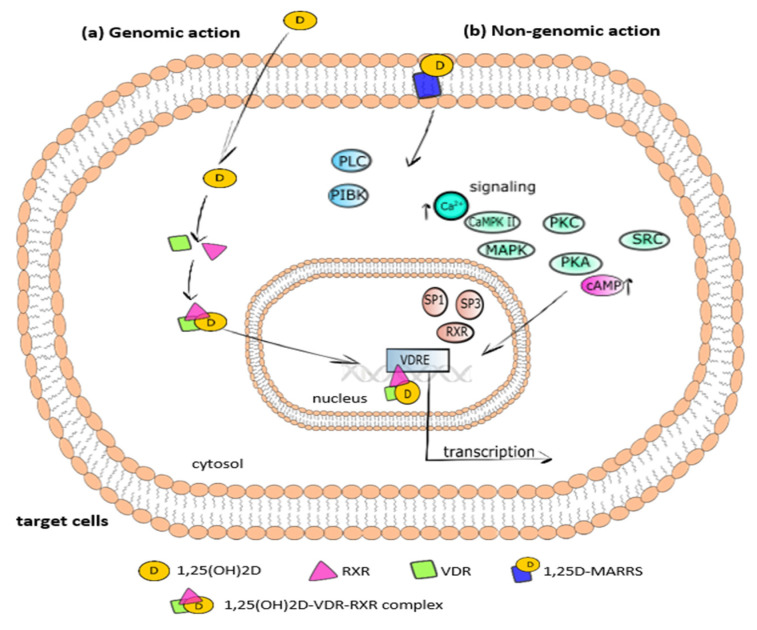Figure 2.
Summary of the cellular responses to vitamin D identified so far: (a) genomic and (b) non-genomic pathways. Active metabolites of vitamin D are characterized by a broad and diverse biological activity. In many tissues and cells, vitamin D binds to the nuclear vitamin D receptor (VDR) and then forms a heterodimer with the 9-cis retinoic acid receptor (RXR) with the properties of a transcription factor, which initiates (a) genomic action of the molecule. The nongenomic effects (b) are mediated by a membrane-located cellular receptor, which is distinct from the nuclear receptor and triggers intracellular metabolic pathways modulating the effects of gene expression. Abbreviations: D, 1,25(OH)2D; VDR, vitamin D receptor; RXR, retinoid X receptor; VDRE, vitamin D response element; 1,25D-MARRS, 1,25D-membrane-associated rapid response steroid-binding protein; PI3K, phosphatidyl-inositol-3 kinase; MAPK, mitogen-activated protein kinases; PLC, phospholipase C; CaMPKII, Ca2+-calmodulin protein kinase II; PKC, protein kinase C; Src, nonreceptor tyrosine kinase Src; PKA, protein kinase A; cAMP, cyclic adenosine monophosphate; SP1 and SP3, transcription factors. ↑ increase; ↓ decrease.

